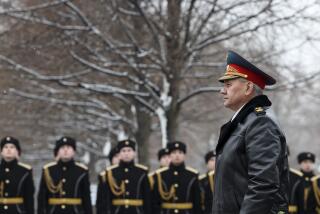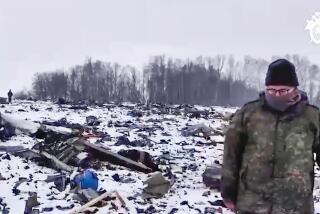Russian passengers brave -61 F. to push-start jet with frozen brakes
Anyone who’s ever been stuck in a Siberian backwater in late November would understand the impulse.
As 74 homebound oil workers and seven crew members waited for a Katekavia Airlines Tu-134 passenger jet to take off from a remote Arctic Circle air strip in Igarka, they were told the brakes on the jet’s landing gear had become frozen, and a tow-truck was having trouble wresting it free.
And it wasn’t going to warm up anytime soon.
After deplaning to lighten the aircraft, about two dozen of the passengers milling around in -61 degrees decided to help dislodge the plane from winter’s embrace.
An amateur video of the men lined up behind the wings and trying to shove the plane free has been the source of amusement in most circles, although the local prosecutor’s office is investigating the incident.
“In air temperatures as low as 52 degrees below zero Celsius [-61 F.] its braking system got jammed,” Oksana Gorbunova, senior assistant to West Siberia’s transport prosecutor, told Russia’s Tass news agency Tuesday. “The tug-truck failed to get the plane moving, so friendly passengers agreed to help and they soon safely left for home.”
But the pressure exerted on the wings and flaps could have damaged the aircraft and endangered those on board for the nearly three-hour flight to Krasnoyarsk, the regional capital, Gorbunova said.
The plane had been sitting on the tarmac for more than 24 hours and inquiries will be made as to whether proper maintenance was performed during the stopover, as well as on the actions of the flight crew and ground staff, she said.
Katekavia is one of hundreds of “Babyflots,” small private and regional airlines that have inherited aging Russian-made aircraft from the Soviet-era air transport monopoly Aeroflot.
Follow @cjwilliamslat for the latest international news 24/7
More to Read
Start your day right
Sign up for Essential California for news, features and recommendations from the L.A. Times and beyond in your inbox six days a week.
You may occasionally receive promotional content from the Los Angeles Times.







